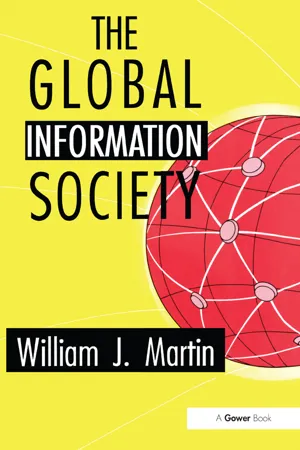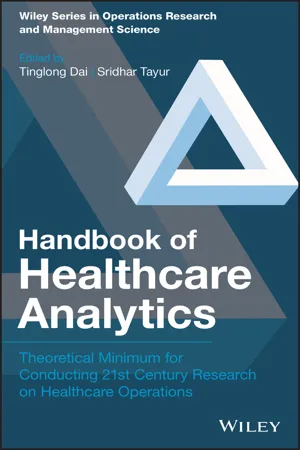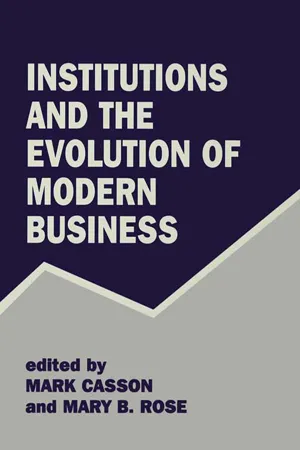Business
Information Economics
Information economics is the study of how information is created, distributed, and utilized in economic systems. It focuses on the impact of information asymmetry, where one party has more or better information than the other, on decision-making and market outcomes. In business, understanding information economics helps in making informed decisions about pricing, product development, and strategic planning.
Written by Perlego with AI-assistance
Related key terms
4 Key excerpts on "Information Economics"
- eBook - ePub
- William J. Martin(Author)
- 2017(Publication Date)
- Routledge(Publisher)
3Don Lamberton has ascribed the emergence of Information Economics to a combination of circumstances including recognition of the unrealistic assumptions of neoclassical theory, a reaction to the failures of government and business policies and the potential contribution of intelligent electronics to enhanced communication, computation and control.4 Lamberton has singled out the complementary contributions of Jacob Marshak and Fritz Machlup, as pointing the way for much that was to follow. Marshak focused on expectations and the notion of optimality, where the value of information was seen as dependent on the benefits that would flow from its use. This resulted in the start of an unbundling process, which separated out the component activities of enquiring, communicating and deciding, as well as limitations on the transmission of information. As Lamberton observed, henceforth information had to be regarded as costly.4 Machlup studied separate components of the economic system, such as markets, the education system and policy, the linkages between them and the role of information. In so doing he developed the notion of an information industry, a phenomenon so pervasive as to resist analysis within the framework of conventional national accounting. His pioneering work on the production and distribution of knowledge in the United States in 1962 was followed by research into the nature and economic significance of information and knowledge. This inspired a considerable volume of comparative studies all over the world. Gradually, therefore, the assumptions of Walrasian equilibrium gave way to the study of rational expectations, to patterns of behaviour under conditions of uncertainty in information searching, and to questions of co-ordination and control and the linkages between information and organization. However, in a world where information asymmetries were very much the order of the day, the economist’s need to quantify things and incorporate them into complex statistical models continued to encounter serious difficulties. Faced with the perennial difficulty of devising a means for measuring information, Marc Porat adopted the device of counting value added and employment in markets. Others, such as Stigler, Arrow and Jonscher, defined information as a reduction in uncertainty, arguing that without uncertainty there would be no need for information. However, this still fell far short of a means by which information could be quantified, something which in turn affected further proposals for the incorporation of information into the neoclassical model, not simply as a residual, but as a commodity.2 - eBook - ePub
Handbook of Healthcare Analytics
Theoretical Minimum for Conducting 21st Century Research on Healthcare Operations
- Tinglong Dai, Sridhar Tayur(Authors)
- 2018(Publication Date)
- Wiley(Publisher)
2016 , p. 116).15.2.2 Information Economics: Key Concepts
According to the Journal of Economic Literature classification code JEL: D8 (“Information, Knowledge, and Uncertainty”), Information Economics covers the following subjects:JEL: D80 ‐ General JEL: D81 ‐ Criteria for Decision‐Making under Risk and Uncertainty JEL: D82 ‐ Asymmetric and Private information; Market Design JEL: D83 ‐ Search; Learning; Information and Knowledge JEL: D84 ‐ Expectations; Speculation JEL: D85 ‐ Network Formation and Analysis: Theory JEL: D86 ‐ Economics of Contract: Theory JEL: D87 ‐ Neuroeconomics JEL: D89 ‐ Other,where D87 (“Neuroeconomics”) is an emerging subject driven mostly by the latest medical developments. Our focus in this chapter is the first part of D82 (“Asymmetric and Private information”) and D86. For a detailed discussion of market design, readers are referred to chapter 3 (“Market Design” by Itai Ashlagi) of this volume.The central question in the field of Information Economics is, how does the lack of information drive decision‐makers' behavior? By saying “lack of information,” we refer to a scenario that may be one of the following two cases, depending on what the information is about.15.2.2.1 Nonobservability of Information
The information we speak of cannot be precisely and verifiably obtained, or is prohibitively costly to obtain. As an example, the information may be whether a physician has chosen a correct diagnostic and treatment path for a patient suffering from a given medical condition. The patient's health outcome is not fully determined by a physician's diagnosis and treatment decisions. So it is impossible to perfectly verify whether the physician has made the correct decision, even after the health outcome is revealed—one cannot be certain whether a favorable health outcome is due to the physician's service or the patient's self‐healing. In certain cases, even if the physician makes the best medical decision, patient outcome may still be adverse. The lack of information is partially attributed to infeasibility of a “pay only if cured contract” (Dranove and White, 1987 - Mark Casson, Mary B. Rose(Authors)
- 2014(Publication Date)
- Routledge(Publisher)
Marschak approached information from a decision theory perspective. This is very useful, because ‘economic man’ is basically ‘man the decision-maker’. Thus a full analysis of the role of economic information must consider the impact of information on decisions of every kind. This perspective emphasises the economic value of information. Better information leads to better decisions, on account of both better individual judgement and better co-ordination of different individual decisions. Better decisions lead, in turn, to better use of resources, and hence to higher social welfare. The vision of the economy as an information system is in sharp contrast to the materialistic vision of the economy found in standard economic textbooks. A typical textbook summarises the economy in terms of a ‘wheel of wealth’ (or ‘wheel of income’), in which households supply factors of production to firms, who use them to produce goods which households themselves consume. 11 Markets co-ordinate the flows of factors from households to firms and the flows of products from firms to households. This account is a travesty of the way that the economy actually works. It equates the firm with a producer, ignoring the fact that many firms are actually responsible for the organisation of the market process itself. 12 Firms create markets by innovating new products. They engage in arbitrage and speculation, integrating markets over space and time. Retailers and wholesalers hold inventories which help to buffer fluctuations in supply and demand. Advertising agencies help to disseminate information on product quality. Banks handle specialised information on the debts that are created when payments cannot be fully synchronised with the delivery of products. A simple way of summarising these points is to say that firms are specialised intermediators- eBook - ePub
On Ethics and Economics
Conversations with Kenneth J. Arrow
- Kenneth J. Arrow, Kristen Renwick Monroe, Nicholas Monroe Lampros(Authors)
- 2016(Publication Date)
- Routledge(Publisher)
1 The economic agents take account of the possible random events in advance and know what will happen under each possible realization. Hence, news will affect the markets, but it cannot cause a runaway reaction. I seem then to be repudiating a good part of my life’s work. Actually, I was always aware of some issues, and a careful reading of my papers will show reservations and caveats. I don’t intend this lecture to be a defense of myself, but I make a few remarks explaining my past thinking. What I want to stress in this lecture is that information is endogenous to the economic system. Information comes in many shapes and forms, but two important things can be said. One, it plays an essential role in directing the allocation of resources above and beyond the role of the prices of the usual commodities. Two, it is itself a commodity, being both scarce and valuable, but it has properties quite different from the usual. The special properties of information make the usual modeling of allocation through a market of limited use.My approach will be to start with the standard approach of economic theory. I assume that consumers are rational with regard to consumption and with regard to risk-bearing. Firms maximize profits, although that term requires definition. There are markets, at least until they prove to be difficult or impossible. The markets clear at some appropriate price.As we shall see, the program leads to some conclusions but also deep difficulties. It is these that we want to emphasize.Given this background, I want to introduce information as an explicit economic variable, governed by the same motivations as other economic choices. But the peculiarities of information as a commodity are stressed.To introduce the subject and show its significance, I will review the different ways in which information affects the economic system.The Roles of Information in the Economic System
That information is important to the economy might seem to be self-evident. Ever since the work of Robert Solow, it has been evident that economic progress has been propelled for the most part by increase in knowledge, what we usually think of technological progress. This is information about the transformation of goods from one form to another. In the usual neoclassical system, these are embodied in the production possibility sets. In the simplest version, the change takes place exogenously, usually represented by an exponential factor in some part of the model. (Of course, exponential growth forever is not possible, but it could conceivably be an approximation.) Even in this simple account there are, or ought to be, complications. Technical change, after all, occurs in specific industries. It will change relative prices. If I am considering investing in that industry, I might postpone the investment to take advantage of a superior process. I might worry that a competitive product will become cheaper and so not invest today. In short, anticipating technical progress will have effects on current economic behavior.
Learn about this page
Index pages curate the most relevant extracts from our library of academic textbooks. They’ve been created using an in-house natural language model (NLM), each adding context and meaning to key research topics.



